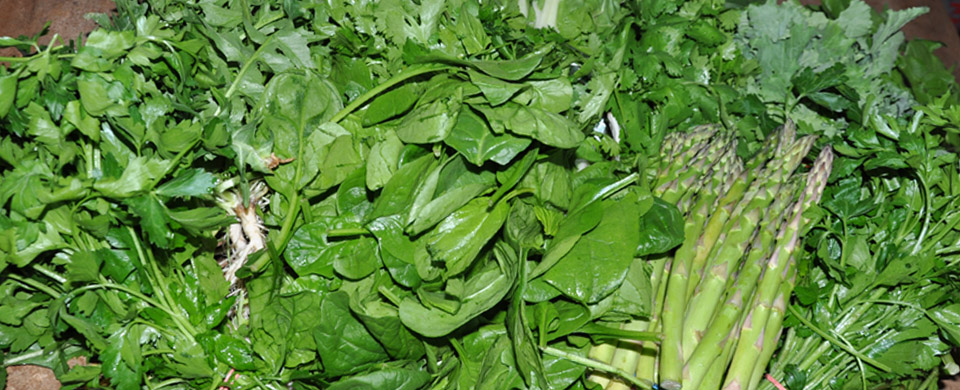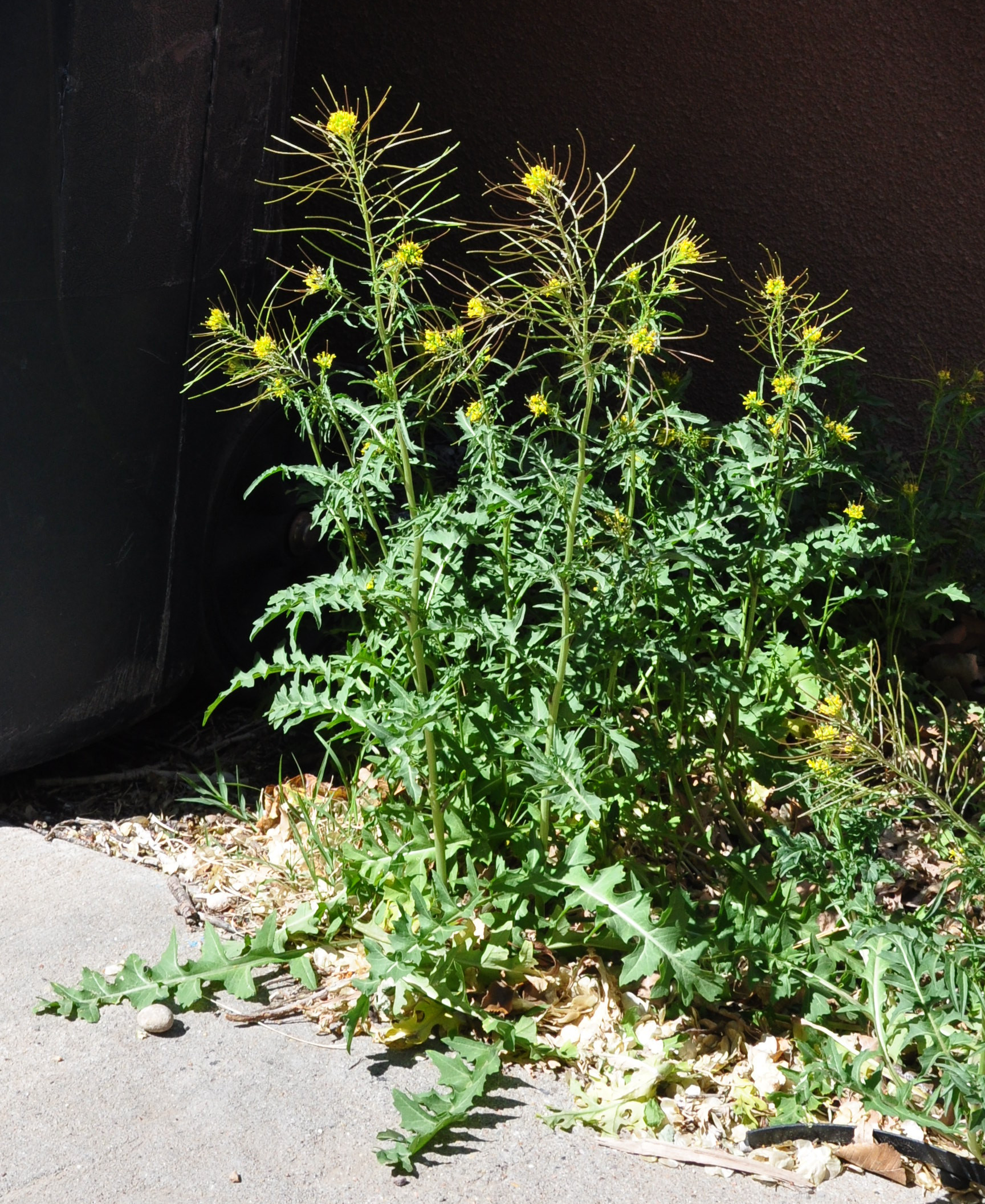
A Mess of Mediterranean Greens
In the days before the long-distance, refrigerated transport of fresh food, the winter months were a time in which one’s diet was limited to various root crops, nuts, fruits, fresh dairy and eggs, foods preserved through drying, salting, or smoking, and fermented items like sauerkraut and cheese. It was with great anticipation as the days grew longer in the spring that people looked for green shoots to emerge from the earth to become the first fresh food that had been consumed for months. These spring greens, bursting with minerals and vitamins, were eaten as a tonic to throw off the lethargy of winter. Throughout the countries ringing the Mediterranean, the gathering of early spring greens is an institution stretching back millennia, with many dishes making use of this spring bounty available for anyone able to walk into the countryside with a basic knowledge of edible plants and a basket. This month we celebrate this reawakening by focusing on vegetarian foods from around the Mediterranean basin that emphasize the use of wild and domesticated greens. Even though each plant has its own unique flavor, it is possible to roughly categorize greens into four broad categories: sweet, sour, bitter, and spicy. Depending upon the dish, different quantities of greens representing each of these types can be used. In the following recipes, we’ll mix and match greens representing all these categories to make more flavorful food than would be possible if we only used on type. The main greens that we’ll use are: Sweet – spinach and asparagus; Sour – swiss chard; Bitter – dandelion, endive, and broccoli raab / turnip greens; Spicy – arugula or any number of wild mustards. Besides these, we’ll also use a variety of fresh herbs such as dill, parsley, and green onions.
Tumble-mustard is one of the most Tumble-mustard is just one of a large number of possible wild greens that can be harvested and eaten, and your yard likely contains more than one. But, there are some important issues to consider before heading out to wild-harvest your next meal. First, you need to be able to accurately identify the plants you are collecting so that you don’t gather something that tastes bad, is inedible, or is potentially harmful. Because Jeff has his Ph.D. in plant ecology and has been identifying plants for most of his life, this was not an issue for us. Second, you need to limit your collection to only places that have not been sprayed with herbicides or pesticides. Since we don’t use either, we knew that the tumble-mustard in our yard was poison-free. Also, you should avoid eating plants that are growing in places where pets are peeing or pooping, unless you’d like to take the chance of getting a parasite. Because our yard is walled off and we have no outdoor pets, again this was not an issue for us. However, we’d be much more circumspect about using tumble-mustard growing along the side of an alley or in a city park. And, once we gathered the tumble-mustard greens from our yard, we still made sure to thoroughly wash them in multiple changes of fresh water until all dirt and grit was removed. In her book “Mediterranean Greens and Grains” Paula Wolfert not only describes in great detail the gathering of wild greens throughout the region, but also provides a very useful appendix listing a number of the principle greens used throughout the Mediterranean. Like tumble-mustard, many of these have also escaped into North America where they now grow as field, garden, and yard weeds. Most of these should be harvested while the leaves are very young. Some of the more useful are:
These are just a small number of edible weeds. Here in New Mexico various Amaranth (Amaranthus) and Lamb’s Quarters (Chenopodium) species are referred to as ‘quelites’ and are an important component of the traditional cuisine. If you become interested in harvesting the weeds in your garden and yard, the best thing to do first is find a reputable field guide. You really can’t do any better than tracking down the classic Euell Gibbons books “Stalking the Wild Asparagus” and “Stalking Healthful Herbs”.
The principle inspiration for the following menu comes from not only Paula Wolfert’s “Mediterranean Grains and Greens” (please look this up, it is wonderful as are all of her cookbooks) but also Susie Jacobs’ “Recipes from a Greek Island.” In passing, we'll mention one last thing: not only at home but also at Linda's workplace we found those who ate this food to become almost instantly happier and more energetic. While in no way does this represent valid scientific data, it suggests that perhaps all those Mediterranean grandmothers knew what they were doing when they loaded their families up on fresh greens to start the spring. Archive |

 We’re going to fulfill our spicy greens needs by wild-harvesting a weed that emerges each spring in the yards of Albuquerque: the tumble-mustard (Sisymbrium altissimum). The plant is native to the western part of the Mediterranean Basin in Europe and Northern Africa, and was likely introduced into North America as a contaminant of crop seed. One of its common names is the ‘Jim Hill Mustard’ after James J. Hill, a Canadian-American railroad magnate: because its seeds were often found in containers of other crop seeds, the railroads served as one of the principle ways in which this species spread across the continent.
We’re going to fulfill our spicy greens needs by wild-harvesting a weed that emerges each spring in the yards of Albuquerque: the tumble-mustard (Sisymbrium altissimum). The plant is native to the western part of the Mediterranean Basin in Europe and Northern Africa, and was likely introduced into North America as a contaminant of crop seed. One of its common names is the ‘Jim Hill Mustard’ after James J. Hill, a Canadian-American railroad magnate: because its seeds were often found in containers of other crop seeds, the railroads served as one of the principle ways in which this species spread across the continent. common yard weeds here in Albuquerque, where it germinates during late fall and winter rains, develops a dense rosette of basal leaves, and then sends up a flowering stalk in early-mid spring. The leaves are very similar in flavor to arugula – though perhaps a bit spicier, and they can be freely interchanged in the following recipes. Our last September was very wet, and as a result, the tumble-mustard came up with abandon over the winter, and the city – and our back yard – is now awash in it. Given the amount of food value that would otherwise be thrown into the compost pile, using this yard weed in our meal seemed a wonderful idea.
common yard weeds here in Albuquerque, where it germinates during late fall and winter rains, develops a dense rosette of basal leaves, and then sends up a flowering stalk in early-mid spring. The leaves are very similar in flavor to arugula – though perhaps a bit spicier, and they can be freely interchanged in the following recipes. Our last September was very wet, and as a result, the tumble-mustard came up with abandon over the winter, and the city – and our back yard – is now awash in it. Given the amount of food value that would otherwise be thrown into the compost pile, using this yard weed in our meal seemed a wonderful idea. 